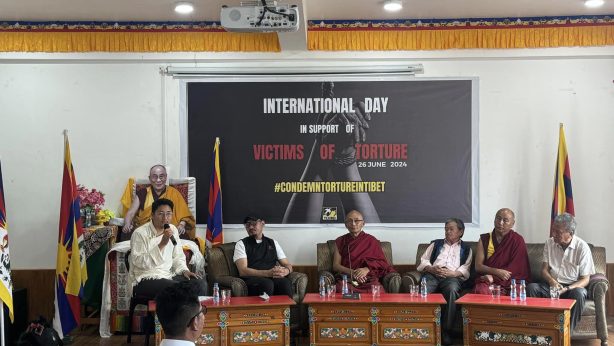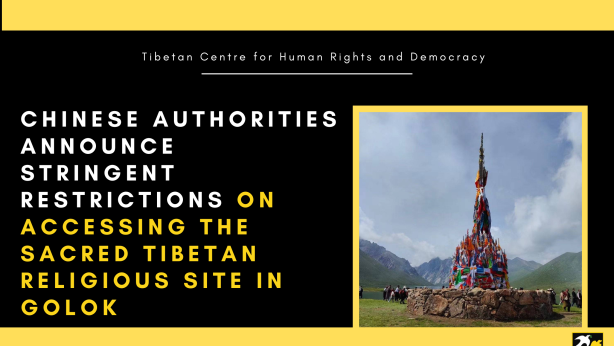Death of a Tibetan prisoner of conscience due to torture
According to reliable information received from Tibet, Lobsang Dhargyal suddenly died Monday morning on 19 November 2002 in a Manufacturing Unit for Hydro-Electricity Power Plant, a “reform through labour” camp located in Siling Village, Machen County (Ch:Maqin xian), Golog “Tibet Autonomous Prefecture”, Qinghai Province. He was serving almost 19 years’ prison term including his earlier two and a half years’ imprisonment.
Although TCHRD is yet to receive detail information, it is almost certain that Lobsang Dhargyal’s sudden demise is due to torture and maltreatment in the forced labour camp. He is believed to have suffered brain haemorrhage at the time of death. More updates on his death shall follow upon receiving further information.
The prevalence of torture as a reprisal for political activities is of great concern especially in light of the People’s Republic of China’s (PRC) obligations with regard to the Convention Against Torture and Other Cruel, Inhuman and Degrading Treatment or Punishment (CAT). Although the PRC ratified CAT in 1988, TCHRD record indicates total number of 79 known deaths both in custody and after release as a direct result of torture since 1986.
The continued abuse and torture of Tibetans in Chinese administered prisons and detention centres in Tibet appear to indicate that the Chinese government is bent on suppressing nationalist sentiments of Tibetan people. Individual rights and rule of law seem only to concur within that parameter.
The Chinese criminal system has traditionally had a strong emphasis on Laogai-‘reform through labour’. In 1994, the National People’s Congress of the PRC promulgated a Prison Law that officially outlawed the ‘Laogai’ system. However, the system remains existent under the terminology of ‘Prison’. The basic aim of the laogai system was not simply punishment but also ‘reform and change for the better’. Inmates of both prisons and labour camps (which are now both classified as prisons), are subjected to intensive labour requirements and ideological training that are considered effective tools to diminish individual political zeal and to create business profits.
Brief background on Lobsang Dhargyal
Lobsang Dhargyal, born 1962, was a former monk of Rabgya Monastery in Machen County in Golog “TAP”. In the post 1987 pro-independence period, Dhargyal with Lobsang Palden and Yeshi Gyaltsen printed and distributed approximately 40,000 pro-independence leaflets in strategic places such as national highways, busy street malls and circumambulation area around Rabgya Monastery. A Tibetan national flag was hoisted on the rooftop of the monastery’s assembly hall and a smaller paper flag was pasted in the corner.
On discovering wooden block prints from his room, Machen County Public Security Bureau Officers arrested Lobsang Dhargyal on 25 November 1992. After detaining him for one year in Golog Prison, Golog Intermediate People’s Court sentenced Dhargyal to two and half years with an additional two year’s deprivation of political rights. During the entire period of his imprisonment, Dhargyal was handcuffed and his feet were manacled. As a result of severe beatings and maltreatment, he lost his two front teeth. On 25 May 1995, Lobsang Dhargyal was released.
In April 1997, Dhargyal fled Tibet escorting Tenzin Choekyi Gyaltsen Rinpoche, head of the Rabgya Monastery, and the 20th reincarnation of the mother of Jetsongkhapa (the founder of Gelug School of Tibetan Buddhism). Rabgya Monastery had come under heavy restrictions and surveillance that time.
In May 2001, while returning to Tibet to visit his ailing mother, Lobsang Dhargyal got arrested somewhere near Shigatse in “Tibet Autonomous Region” (“TAR”). He was subsequently handed over to Golog “TAP” authorities. In October of the same year, Golog Intermediate People’s Court sentenced Lobsang Dhargyal to 16 years’ prison term on grounds of suspicion of being involved in espionage and “splittist” activities.


